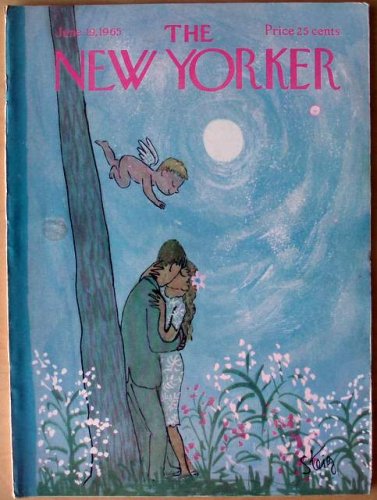Thursday January 28, 2010
Three Stories with J.D. Salinger - Part I
My First Story with J.D. Salinger: Hapworthed
In October 1996 I was writing an article for a short-lived Seattle Times weekly about someone named Jeff Bezos who had started something called amazon.com, and, needing to see what a .com was, I biked over to my friend Ciam’s house and went online for the first time.
It would be interesting to see a screenshot of what I saw. I remember Ciam sat down at his desk and tapped on his computer keyboard, until, after some time, and even odder noises, he declared, “Here we are.”
I look over his shoulder and narrowed my eyes. “Is this on your computer?”
 His explanations about what the online world was, I’m sure, fell noiselessly into some bottomless pit in my brain labeled “tech crap.” Once things go abstract I don’t quite get them, and if I understand the online world now it’s less because I get its abstractness than because I’ve transported its abstractness into the tangible world. Some part of my brain thinks reading online is as real as reading a newspaper.
His explanations about what the online world was, I’m sure, fell noiselessly into some bottomless pit in my brain labeled “tech crap.” Once things go abstract I don’t quite get them, and if I understand the online world now it’s less because I get its abstractness than because I’ve transported its abstractness into the tangible world. Some part of my brain thinks reading online is as real as reading a newspaper.
“So what kinds of books do these guys have?” I asked.
Ciam shrugged. “Give me an author,” he said. I suggested Norman Mailer. I often went through phases with writers, and I was going through a Mailer phase now—even reading him chronologically—and I was pretty aware of all he had written. Or so I thought. After we typed in his name, some of the titles that came up dumbfounded me. The Bullfighter from 1967? Ciam and I were testing amazon but it felt like I was doing the failing.
So I suggested J.D. Salinger. Just four titles, right? The Catcher in the Rye, Nine Stories, Franny and Zooey, and Raise High the Roofbeam, Carpenters and Seymour: an Introduction. Sure enough, we got those four titles in all of their various incarnations. We also got this: Hapworth 16, 1924.
“You’re kidding,” I said, staring at the screen.
“What?” Ciam asked.
“Hapworth. It’s the last story Salinger published—in The New Yorker in 1965—but it’s never been published in book form.” I motioned toward the screen. “Can you find out more about it?”
Ciam clicked on the link—a verb and a noun that hadn’t yet entered my vocabulary. Hapworth was due to be published by an outfit called Orchises Press in January 1997. Three months away.
“Wow,” I said. Initially I was more excited as a reader. Only slowly did I realize I had something of a scoop.
 “Does anyone else know about this?” I asked, looking around.
“Does anyone else know about this?” I asked, looking around.
The next time I spoke to my editor at The Seattle Times I mentioned the Hapworth discovery and suggested we do a separate story on it. Or at least a side-bar. The first J.D. Salinger book in 35 years! Think of it!
He didn’t share my enthusiasm. It’s not new? he asked. It’s just a reprint? he asked. “But feel free to put it in the story,” he added helpfully.
There are moments in life when you show what you’re made of, and, unfortunately, this was one such moment for me. I don’t remember my editor’s exact arguments but I accepted them in a defeatist way—as a door closing—rather than as what they were: a door opening. Since I was a freelancer, this editor had basically given me carte blanche to pitch the story to someone higher on the food chain: The Washington Post, The New York Times. But taking the individual for the institution, and assuming the institution knew what it was talking about, I folded.
Too bad, I thought. Felt like a story to me.
I did mention Hapworth to my sister. She had just gotten a job as a reporter with the Washington D.C. Business Journal, and, since Orchises Press was located in Virginia, I thought it might make a good local story. She ran with it. A few days after her article appeared, The Washington Post picked it up. A few days after that, The New York Times picked it up. About a week later, in the bookstore warehouse where I worked, National Public Radio, which we listened to all the time, did a feature on the excitement the new edition of Hapworth was engendering. I stood for a while and listened. In Don DeLillo’s novel, Libra, the CIA agent who suggests assassinating JFK is, by the time the assassination goes down, just a guy sitting in his basement going through his wine collection. He’s out of the picture. That’s how I felt—like I was on the wrong end of the radio. I listened for another moment before going back to shelving books.
The punchline? Perhaps because of the sudden media attention for Hapworth brought about by my sister’s story, Salinger withdrew permission to publish. Thirteen years later, the story still hasn’t been seen in book form.
Tomorrow: My Summer of Salinger
Baseball's Active Leaders, 2023
What Trump Said When About COVID
Recent Reviews
Everything Everywhere All at Once (2022)
Black Panther: Wakanda Forever (2022)
Doctor Strange in the Multiverse of Madness (2022)
Spider-Man: No Way Home (2021)
The Cagneys
A Midsummer Night's Dream (1935)
Something to Sing About (1937)
Angels with Dirty Faces (1938)
A Lion Is In the Streets (1953)
Man of a Thousand Faces (1957)
Never Steal Anything Small (1959)
Shake Hands With the Devil (1959)







